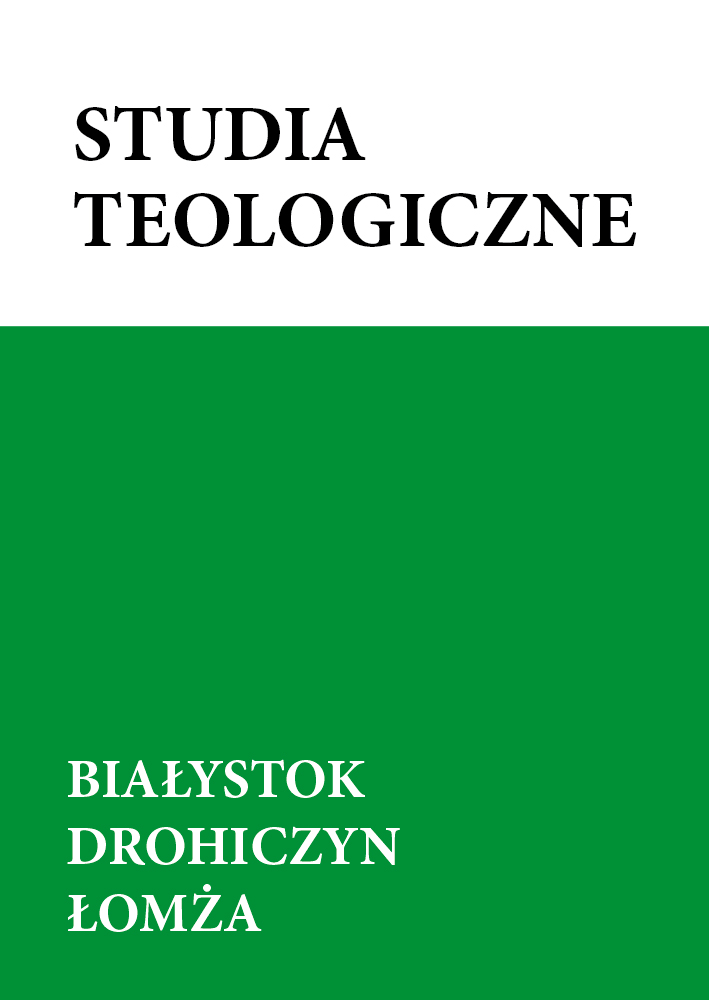The Baptism of Mieszko I. Facts and Hypotheses
The Baptism of Mieszko I. Facts and Hypotheses
Author(s): Józef ŁupińskiSubject(s): Systematic Theology, Pastoral Theology
Published by: Kuria Metropolitalna Białostocka
Keywords: Baptism of Mieszko I; the first Polish prince; baptism of Poland; the beginnings of Polish state; the beginnings of Christianity in Poland
Summary/Abstract: The baptism of Mieszko I (the 1050th anniversary of which occurs this year) was a great event which had important implications for Polish national identity. It constantly arouses much interest among theologians, historians and medievalists.For many years, research regarding the date and place of the baptism of the first historical Polish prince Mieszko I raises a lot of controversy and dispute among historians. The earliest historical sources are inaccurate and incomplete. They do not serve to identify the date and place of the baptism.Knowledge about the events connected with the baptism of Mieszko I is based on chronicles. Earlier historians accepted that the events of Polish history were recorded systematically. The oldest conserved chronicles have: “Mesco (Mysko) dux Polonie baptizatur”. It would be difficult to challenge this historical information. Of course, this event is an undeniable fact. Through the receiving of baptism by Mieszko I, our ancestors entered into the orbit of Roman Catholic Christianity and Western Latin culture. To this there is no doubt, as subsequent events in Polish history confirm this reality.The baptism of Mieszko I took place in the decades after the forming of the early Piast monarchy. What kind of country was this? Did the country of Mieszko I come to existence as the result of a long-term evolution, or was there a short period of formation of statehood, perhaps under the influence of external factors or circumstances? It seems that a large influence on the formation of the Piast monarchy had the situation of the neighbors of the Polans in the first half of the 10th century: Germans, Czechs and Western Slavs.Around the year 950 Mieszko I decided to search for a relationship with the German Empire. Such a relationship was made possible through the receiving of baptism and entering into the sphere of Christianity. Prince Mieszko I first entered into an alliance with the Czech Prince Bolesław in 965. This was confirmed by the marriage with the daughter of Bolesław – Dobrawa. Certainly, in the following year the Polish ruler received baptism. New circumstances constituted a favorable opportunity to develop close relations with the German emperor Otto.The receiving of Christianity by Mieszko not only gave the opportunity to make new alliances but also caused deep political, cultural and moral consequences. The Piast ruler strived for the rapid creation of ecclesiastical structures. Two years after the baptism on his territory bishop Jordan, specially nominated, was fulfilling his pastoral ministry.Preserved sources do not provide a date nor place for the baptism of Mieszko I. This caused and still causes many polemics and controversies about the date and place of the event. It is uncertain when and where the baptism took place.There is no doubt that the acceptance of baptism by Mieszko I had deep consequences for the further history of Poland. Slavs living in areas east of the Odra river entered in area of the Christian world by adopting not only faith in Jesus Christ, but also new manners, morality and culture. Manners and morality began to be formed by the Decalogue, which – on account of high demands – influenced legislation and people’s attitudes. Large was also the importance of Christianity for the sphere of culture.The baptism of Mieszko I was a religious act and equally was also a political act. It was an entering into the group of Western nations and at the same time: coming into existence in the circle of Roman and Christian civilization.The aim of this article is to present the latest hypotheses and interpretations about the reality of the baptism of Mieszko I, on the basis of available historical sources.
Journal: Studia Teologiczne Białystok Drohiczyn Łomża
- Issue Year: 34/2016
- Issue No: 1
- Page Range: 281-298
- Page Count: 18
- Language: English

